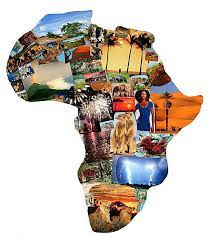Sustainable Economic Development in Africa: Empowering Local Artisans through Resource Optimization
This article examines strategies for achieving sustainable economic development in Africa by leveraging its artisan sector. We will apply several key economic development concepts. Value chain analysis dissects the production and distribution stages, identifying areas for improvement and value creation. The resource-based view (RBV) posits that strategic resource management (tangible and intangible) generates competitive advantage. Cluster theory emphasizes the benefits of geographically concentrated, interconnected firms, boosting collaboration and innovation. The Sustainable Development Goals (SDGs) provide a framework for ensuring economic growth aligns with social equity and environmental sustainability. Finally, Porter's Five Forces framework will be implicitly used to analyze the competitive landscape and market dynamics affecting the artisan sector.
The following strategies, presented in a logical implementation sequence, offer a comprehensive roadmap for empowering African artisans and driving sustainable economic growth:
1. Developing Human Capital: Strategic Skill Enhancement and Capacity Building. Investing in targeted training programs, based on thorough needs assessments, is paramount. A competency-based approach, integrating traditional techniques with modern methods, enhances artisan skills. This aligns with the RBV by upgrading human capital and supports cluster development by fostering a skilled regional workforce. This strategy directly addresses SDG targets related to quality education and decent work.
2. Sustainable Resource Management: Ethical Sourcing and Environmental Stewardship. Sustainable procurement of raw materials is crucial. This necessitates eco-friendly practices, ethical sourcing certifications, and ensuring resource longevity. This addresses the environmental pillar of the SDGs and promotes responsible resource management, a cornerstone of the RBV. Eco-conscious production minimizes environmental impact and appeals to consumers prioritizing ethically sourced goods.
3. Optimizing Value Chains for Enhanced Market Access. Rigorous value chain analysis reveals opportunities for value addition—improved processing, innovative design, and strong branding. Technology integration enhances efficiency and premium product creation. Market access strategies include e-commerce platforms, trade fairs, and direct relationships with international buyers, maximizing economic returns. This strengthens the competitive position of artisans within Porter's Five Forces framework by differentiating their offerings.
4. Strategic Partnerships for Collaboration and Innovation. Promoting collaboration between artisans, designers, and international brands leverages diverse expertise, fostering knowledge exchange, product diversification, and market expansion. This aligns with cluster theory, creating synergies and driving innovation within geographically concentrated artisan communities, improving bargaining power within Porter's Five Forces.
5. Securing Financial Resources: Access to Capital and Financial Literacy. Access to capital is essential for growth. Microfinance initiatives, government grants, and low-interest loans enable artisans to invest in equipment, technology, and business expansion. Sound financial management, adhering to established business principles, ensures effective resource utilization. This directly relates to SDG targets focused on economic growth and reduced inequalities.
6. Strengthening Infrastructure and Supply Chain Efficiency. Investing in improved infrastructure (workshops, storage, transportation) streamlines supply chains, reduces costs, and ensures timely market delivery. Efficient logistics are vital for cluster success, enhancing competitiveness and overall economic efficiency, thereby reducing the threat of substitutes and increasing the overall efficiency of the entire value chain within Porter's Five Forces.
7. Intellectual Property Protection and Brand Building. Protecting artisan intellectual property (designs, trademarks) safeguards innovation. Strong brands enhance market competitiveness and add significant value, increasing both economic and cultural significance. This directly improves the competitive landscape within Porter's Five Forces by establishing a unique brand identity.
8. Preserving Cultural Heritage while Enhancing Market Appeal. Integrating traditional motifs into contemporary designs creates unique products appealing to domestic and international markets. This preserves cultural heritage while enhancing market appeal, creating a niche market and strengthening cultural identity. This strategy helps to build a strong brand identity, and a unique selling proposition that can generate a competitive advantage.
9. Public-Private Partnerships and Supportive Policy Environments. Collaborative efforts among government, the private sector, and NGOs mobilize resources and expertise. Supportive government policies creating an enabling environment and providing incentives are critical for long-term success. This fosters a strong institutional framework, crucial for sustainability and long-term economic growth.
10. Investing in the Future: Education, Awareness, and Intergenerational Knowledge Transfer. Educating future generations about the value of craftsmanship ensures the artisan sector’s longevity and promotes cultural continuity. This secures the sector’s future and reinforces cultural identity within communities.
11. Expanding Global Market Reach and Diversification. Facilitating access to global markets through trade agreements and targeted export promotion diversifies revenue streams, reducing reliance on single markets and fostering economic resilience. This enhances the competitive position of artisans on a global scale and reduces their vulnerability to market shocks within Porter's Five Forces.
Conclusion and Recommendations
Empowering African artisans requires a holistic, strategic approach for inclusive and sustainable economic development. This necessitates integrating skills development, value chain optimization, strategic partnerships, financial support, infrastructure improvements, policy interventions, and a focus on intellectual property protection. Future research should analyze the comparative effectiveness of various financing models, best practices in building resilient supply chains, and the long-term socio-economic impact of these interventions. Continuous monitoring and evaluation, using adaptive management principles, is crucial for ensuring continued relevance and effectiveness in the face of evolving market dynamics and technological advancements. The successful implementation of this roadmap will improve artisan livelihoods and contribute substantially to the broader economic diversification and growth of African nations. A robust evaluation framework, using both qualitative and quantitative methods, is needed to track progress and inform policy adjustments.
Reader Pool: How can the integration of sustainable tourism practices with the empowerment of African artisans contribute to both economic growth and the preservation of cultural heritage, considering the potential challenges and opportunities presented by this approach?



